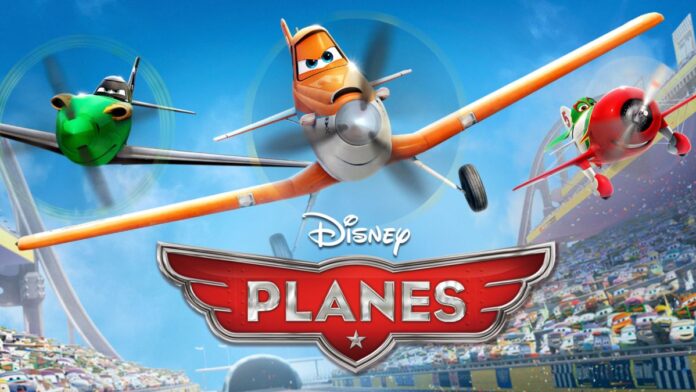Watching a movie about airplanes is often a cringe-worthy event for a pilot, because Hollywood tends to take so many liberties with accuracy for the sake of drama. One time on the set of one of these movies, I asked the director if he knew that real planes couldn’t actually do the thing he was having them do in that scene. “I’m not really concerned with you and the six other people in America who know that,” he answered. “I’m concerned with making it exciting for the rest of the audience.” So I should note, up front, that Disney’s new animated film Planes has planes doing all sorts of things they don’t do in real life—beginning with talk, laugh, cry, scheme, feel bad, and cheer.
Animated films aren’t about reality. At their best, they entertain and connect with kids on other levels, sparking their imaginations while teaching them worthwhile lessons about humans, social relations, and life. So perhaps the surprising thing is just how much accuracy Planes contains among all that fantasy.
What was odd, as a pilot watching Planes, was realizing that the movie was also giving a nod and a wink to pilots and aviation-history buffs. That, in Hollywood film making, is new. For example, the movie incorporates clearly recognizable elements from the real Red Bull Air Race World Championship (which combines aerobatics with timed races around inflatable pylons). When Dottie the forklift/mechanic rattles off a list of problems that Dusty, the main character, will encounter if he pushes his engine and speed to race, the list and terminology is real. So are the commands given by the JFK airport-tower controller (speaking in President John Kennedy’s voice and accent) about the “Canarsie approach”. There are nods to history, as well. Bulldog, the British race plane in the “Wings Around the Globe” competition (voiced by John Cleese), is clearly a DeHavilland DH.88 Comet—a real British race plane that won the 1934 MacRobertson Trophy race from England to Australia. The reason behind those inside gestures and accurate details may have less to do with the producers’ desire to appeal to a pilot audience, however, than it does the simple fact that Klay Hall, the film’s director, is the son of a Navy pilot from Dayton, Ohio.
On the other hand, what this film does best—and that no other aviation film has done quite as well—is present planes and flying not as they are, but as kids imagine them to be. To a four-year-old, an airplane is a magical machine that can do anything. When kids point up at airplanes overhead or stretch their arms out and run down hills, pretending they can fly, they’re not envisioning airspeed instruments and flight-management systems. They’re envisioning freedom, possibility, and a limitless horizon. After all, if an airplane can defy gravity, anything is possible. Who cares how? In real life, planes and flying have a remarkable way of helping people remember the importance of notions like dreams, possibilities, and grabbing hold of life with two hands. If Planes, the movie, is able to mirror reality in even that one way, it would be accuracy enough.
Reflexive Analysis
It was only when nearly finishing this article that I found it genuinely useful. There were a couple of interesting bits or maybe points of reference I’d be able to use by either watching or further investigating Planes. However, Wallace’s assertion that this movie does a good job of depicting flight as children think about it gives value to this movie for my research purposes I believe. While a problem is still very blurry and unsure, the prompt is about communicating flight with kids on some level. Wallace (a pilot) mentions how the film uses real terminologies, locations, and planes. Seeing how film makers work this information into the very polished and kid friendly Pixar style could be useful. There is also a bit of flight history baked into the film as its director happens to be from Dayton, Ohio. The article here doesn’t much explore the feelings associated with the art or the symbolism of flying itself, and that is why I selected it. It mostly reflects upon Planes’ ability to communicate truth to kids in a way they understand, without being bogged down by specificities. As Wallace said “animated films aren’t about reality” and maybe we can use unreality to tech people some of the realities of flight.
Sources
Wallace, L. (2013, August 26). Disney’s planes is a weirdly accurate depiction of flying. The Atlantic. https://www.theatlantic.com/entertainment/archive/2013/08/disneys-i-planes-i-is-a-weirdly-accurate-depiction-of-flying/278484/




